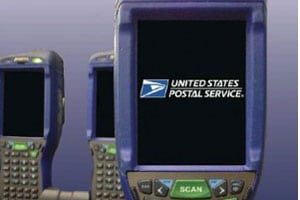 Latching onto the growth of the Internet of Things (IoT), in which connected devices share data in real time to provide enhanced services, the U.S. Postal Service is envisioning an “Internet of Postal Things.” According to a paper published this month by the USPS Office of Inspector General in collaboration with IBM, the USPS has prioritized 16 potential IoPT applications for development.
Latching onto the growth of the Internet of Things (IoT), in which connected devices share data in real time to provide enhanced services, the U.S. Postal Service is envisioning an “Internet of Postal Things.” According to a paper published this month by the USPS Office of Inspector General in collaboration with IBM, the USPS has prioritized 16 potential IoPT applications for development.
These include things like data-gathering sensors on delivery trucks, smart connected mailboxes and applications that monitor the status and performance of vehicles, including fuel consumption and maintenance.
Cisco estimates that worldwide IoT applications will yield more than $19 trillion in value by 2022, $4.6 trillion of which will be in the public sector.
“IoPT could help protect the core letter, parcel, and retail businesses by generating cost savings, operational efficiencies, and user value,” the OIG stated in the paper. “Over time, it could also create new revenue opportunities and foster new business models.”
Three features of the USPS can enable creation of an IoPT, according to the OIG paper:
- Infrastructure: With its vast array of stationary and mobile assets (trucks, boxes, lockers, stations, sortation centers, etc.), and coverage of the entire country, the USPS has the potential to create a limitless number of digital connection points that talk to one another. This could create an information network to complement its physical one. And as the USPS looks to replace its aging fleet of 200,000 vehicles (plans call for 10,000 new delivery trucks over the next two years), it can replace them with sensor-enabled ones. Buildings can also be upgraded to support this interconnected vision.
- Experience in data collection and analytics: The USPS manages enormous amounts of data generated by processing machines which sort billions of pieces of mail daily. It has begun building out its IT architecture to deliver actionable analytics. It is already using some IoPT applications such as RFID tags to measure service standards for international mail and sensor-equipped mobile devices in the hands of carriers.
- Customer demand for information: The paper noted rising customer expectations for parcel tracking information, delivery windows, shipping location options and a simplified returns process. It also noted the rising demand for same-day delivery – which it already does on behalf of Amazon – and dynamic real-time parcel rerouting in ecommerce shipments. “The use of sensors on the vehicle, mailbox, carrier handheld device, or the mail itself would facilitate these services by providing better real-time control over processes and asset locations and availability,” the paper stated.
Some of the IoPT applications described include load optimization, real-time dynamic routing, and collaborative last-mile logistics. This last application is particularly interesting, as it would involve collecting and analyzing real-time data across carriers (USPS, UPS, FedEx, etc.) on truck location, space availability and local traffic conditions to determine for each parcel which vehicle would handle final delivery in city centers most efficiently.
“This could benefit both carrier companies and postal operators,” the paper states. “Carriers may wish to outsource the last mile delivery of a parcel if putting fewer, fuller delivery vehicles on the road reduced the end-to-end cost of transporting and delivering parcels. The carrier driving the last mile would also benefit by having greater volume on the truck, offering more revenue for the fixed cost of traveling down that road.”
The Belgian and Dutch posts have both launched first attempts at collaborative city logistics projects. Parcels from multiple carriers are consolidated at warehouses outside city centers, similar to the USPS’s Parcel Select service, which provides last-mile services for FedEx and UPS. The Belgian Post, which started its project in 2014, estimates it saves about 30% of the total miles driven.
Sensors on vehicles could utilize “vehicle telematics” technology to track locations and optimize routes, gather vehicle maintenance data and monitor drivers to encourage safe and fuel-efficient driving habits.
The paper compared this to UPS’s 10-year-old Orion system, which remotely monitors vehicle performance and driver behavior, selecting the most efficient routes. By 2017, UPS projects that Orion will monitor 55,000 routes. Over the past five years, it has helped cut annual preventative maintenance inspections for UPS’s 100,000-vehicle fleet in half, from 240,000 to 120,000, while saving $300 million to 400 million in fuel through route optimization.
